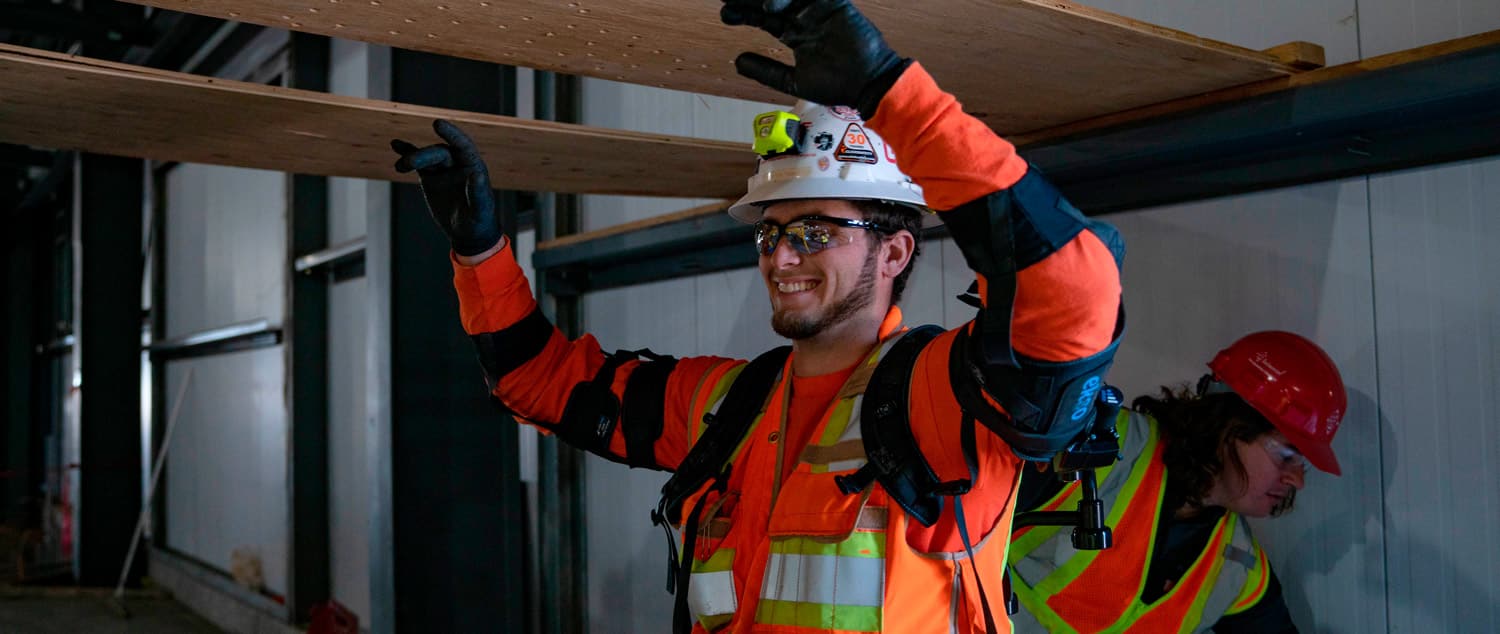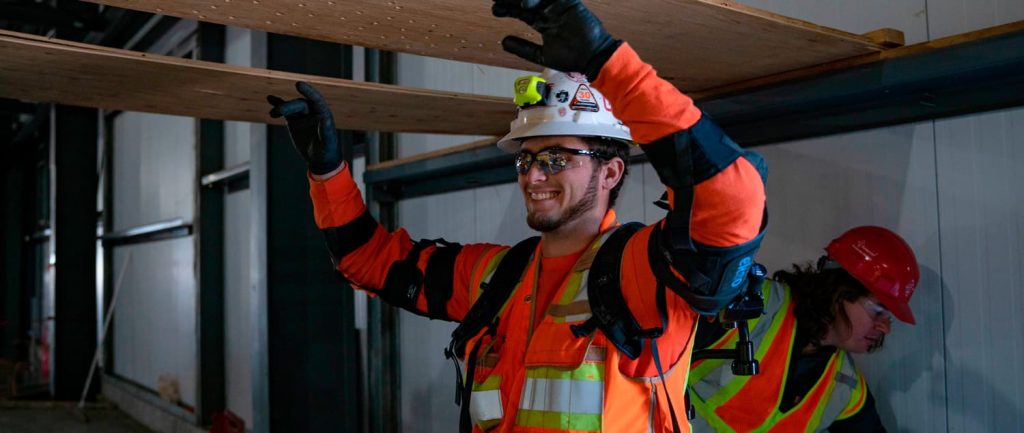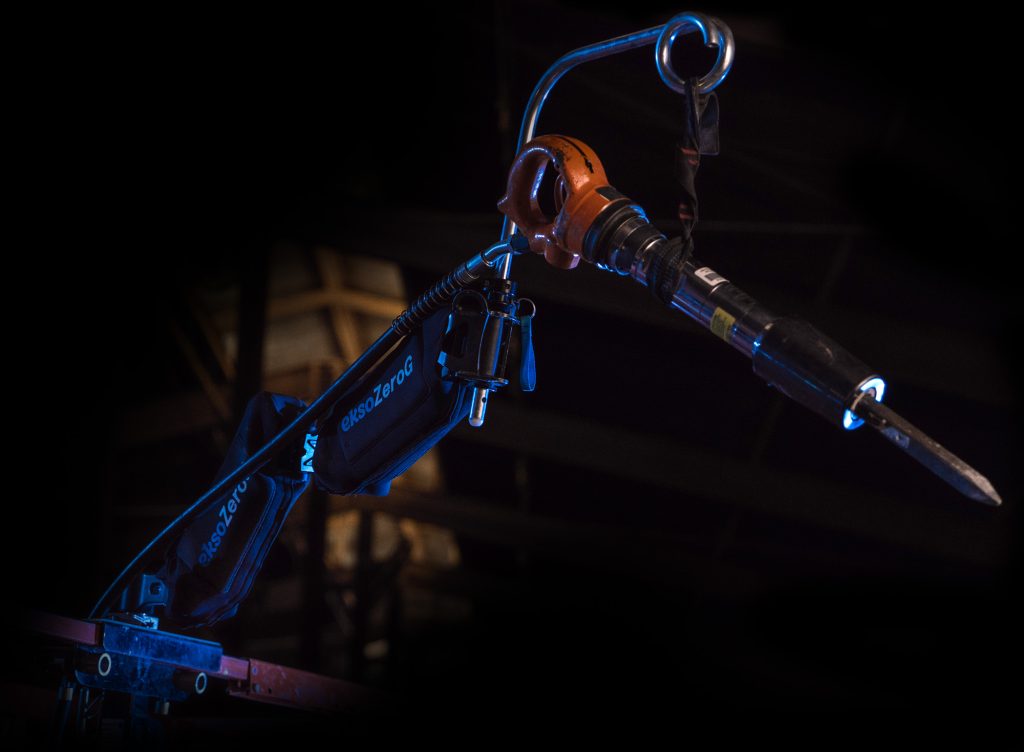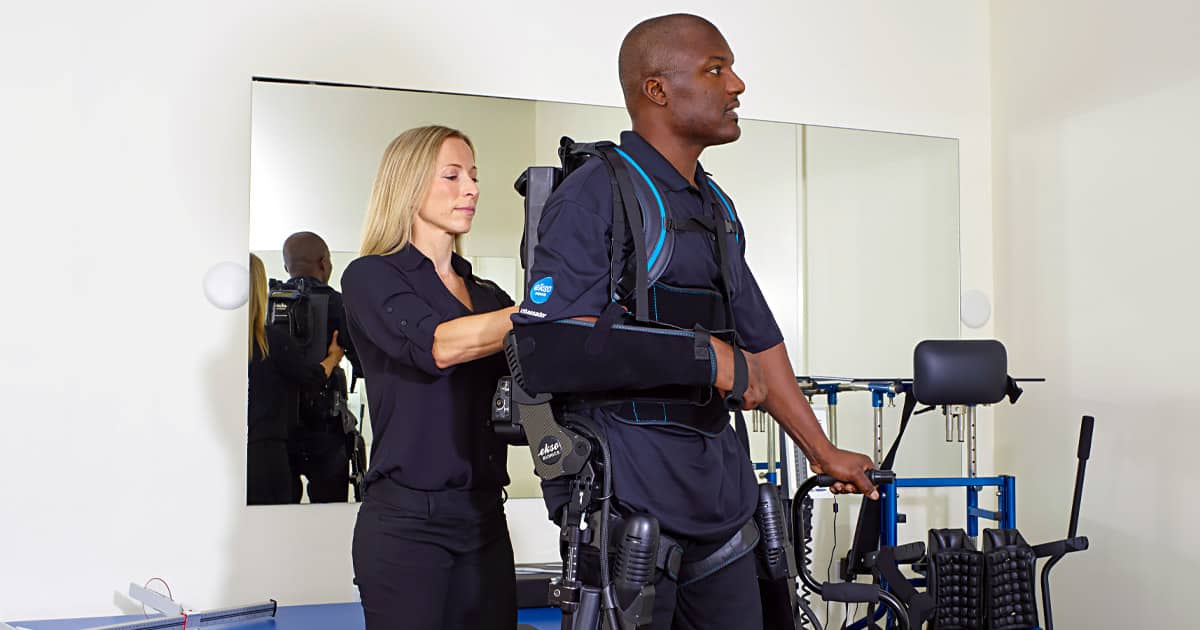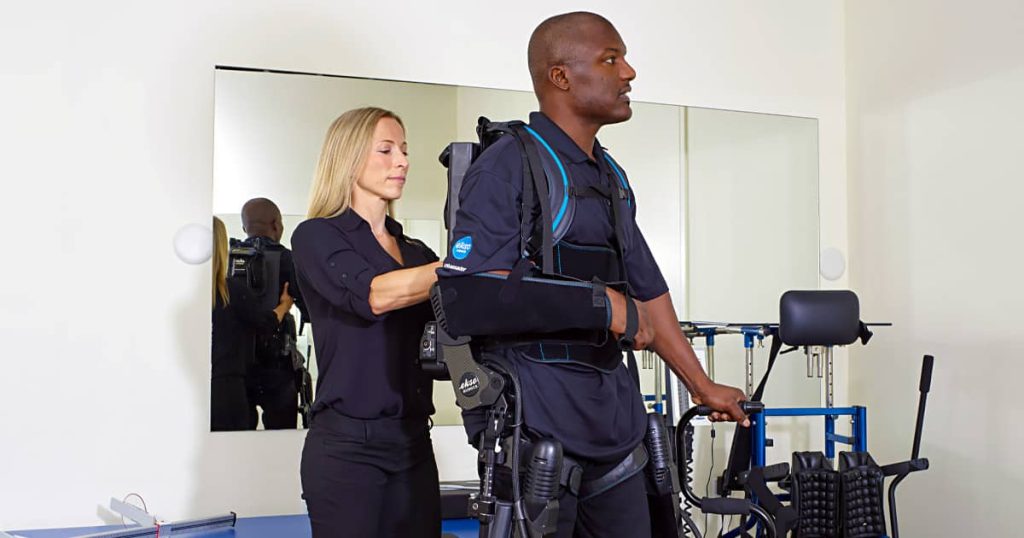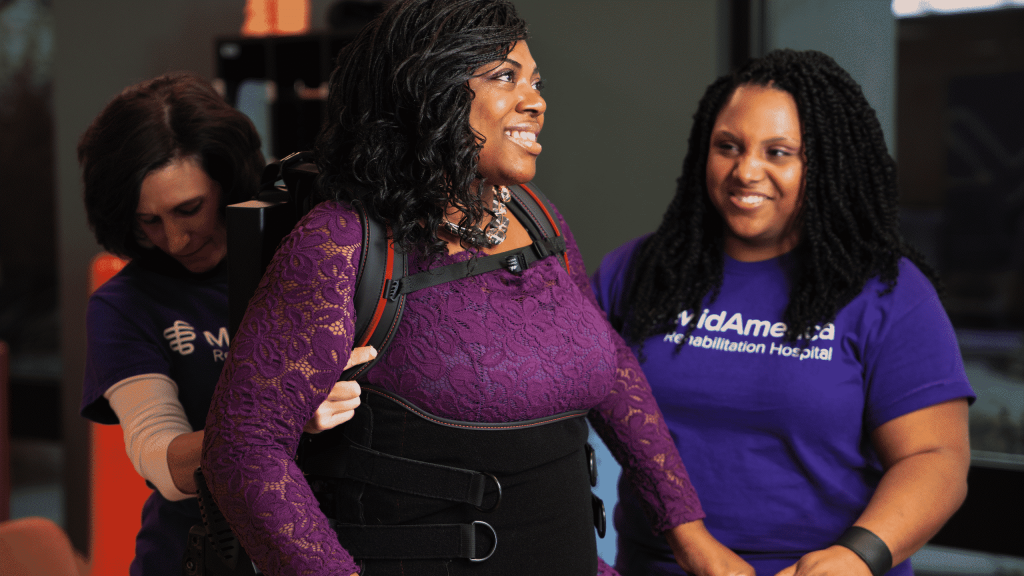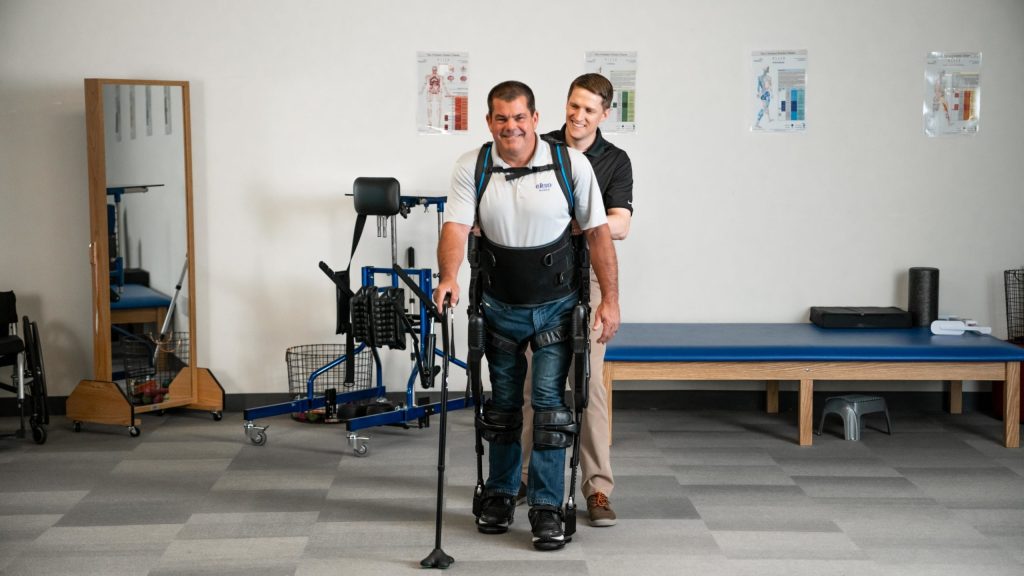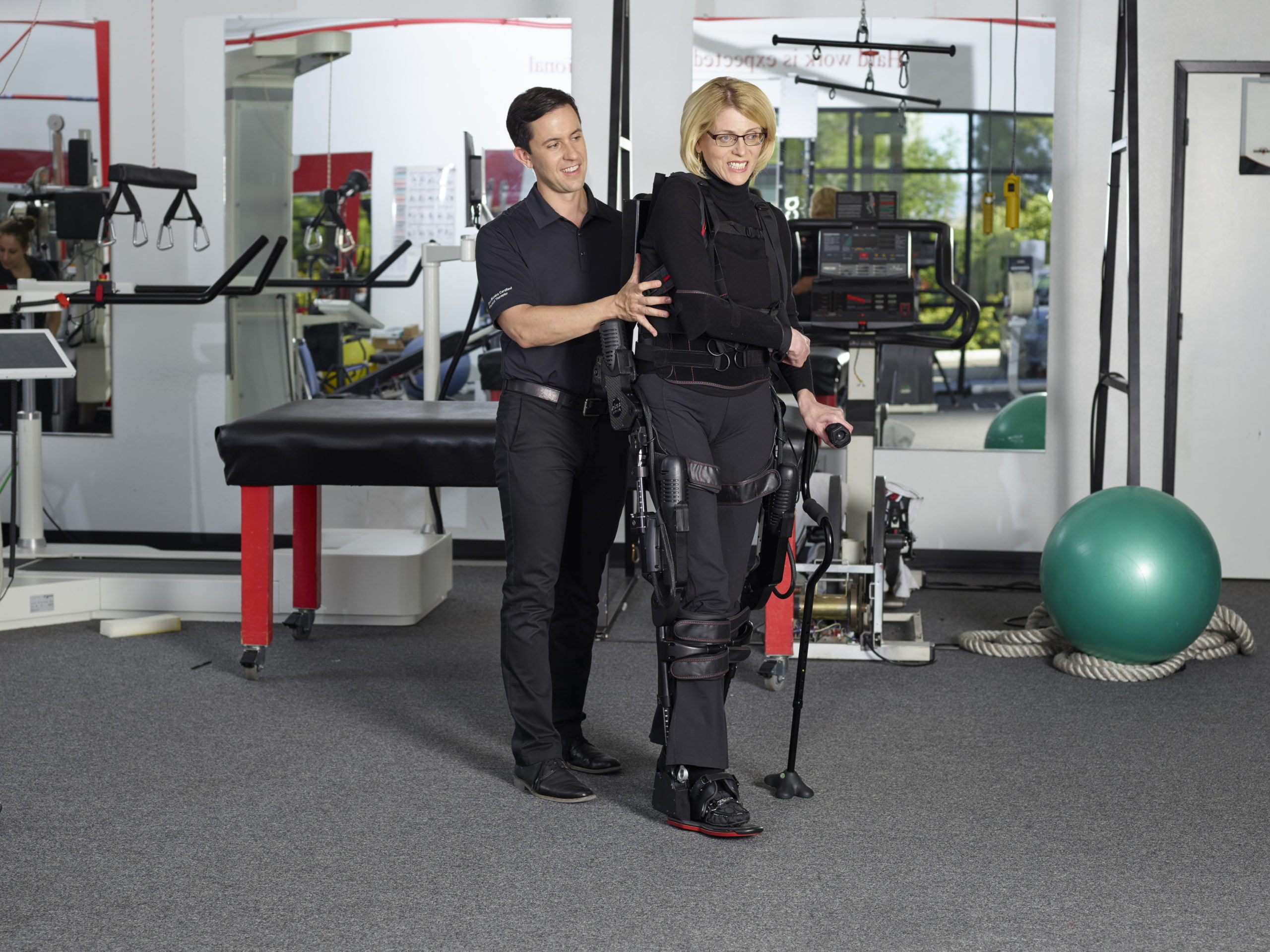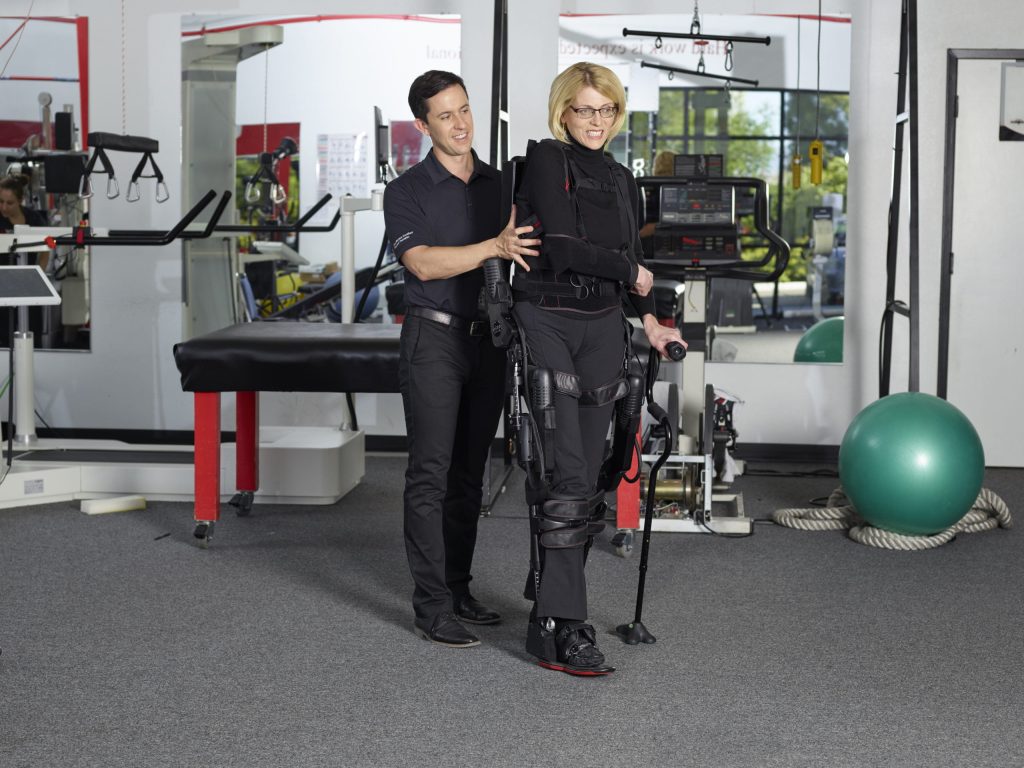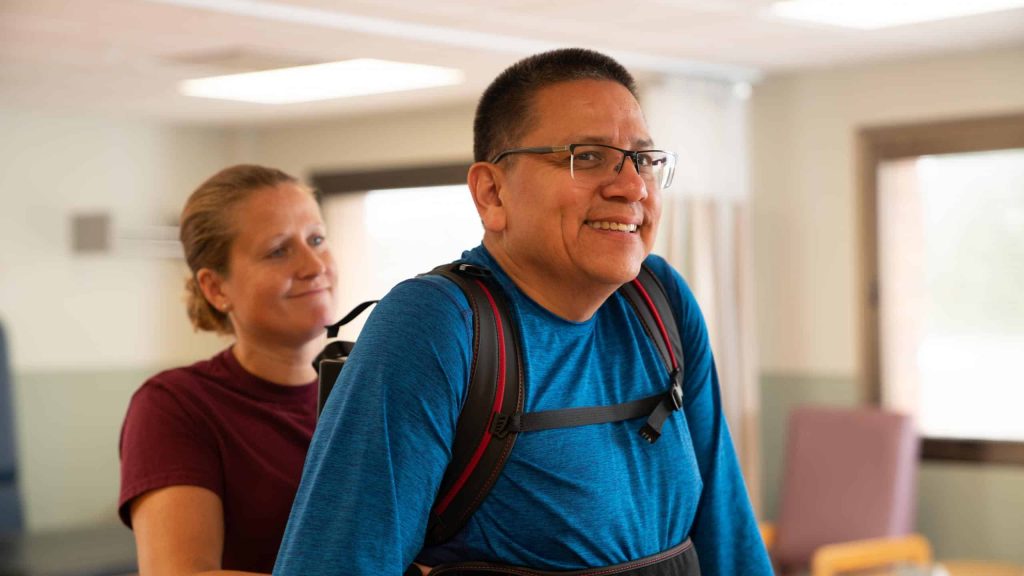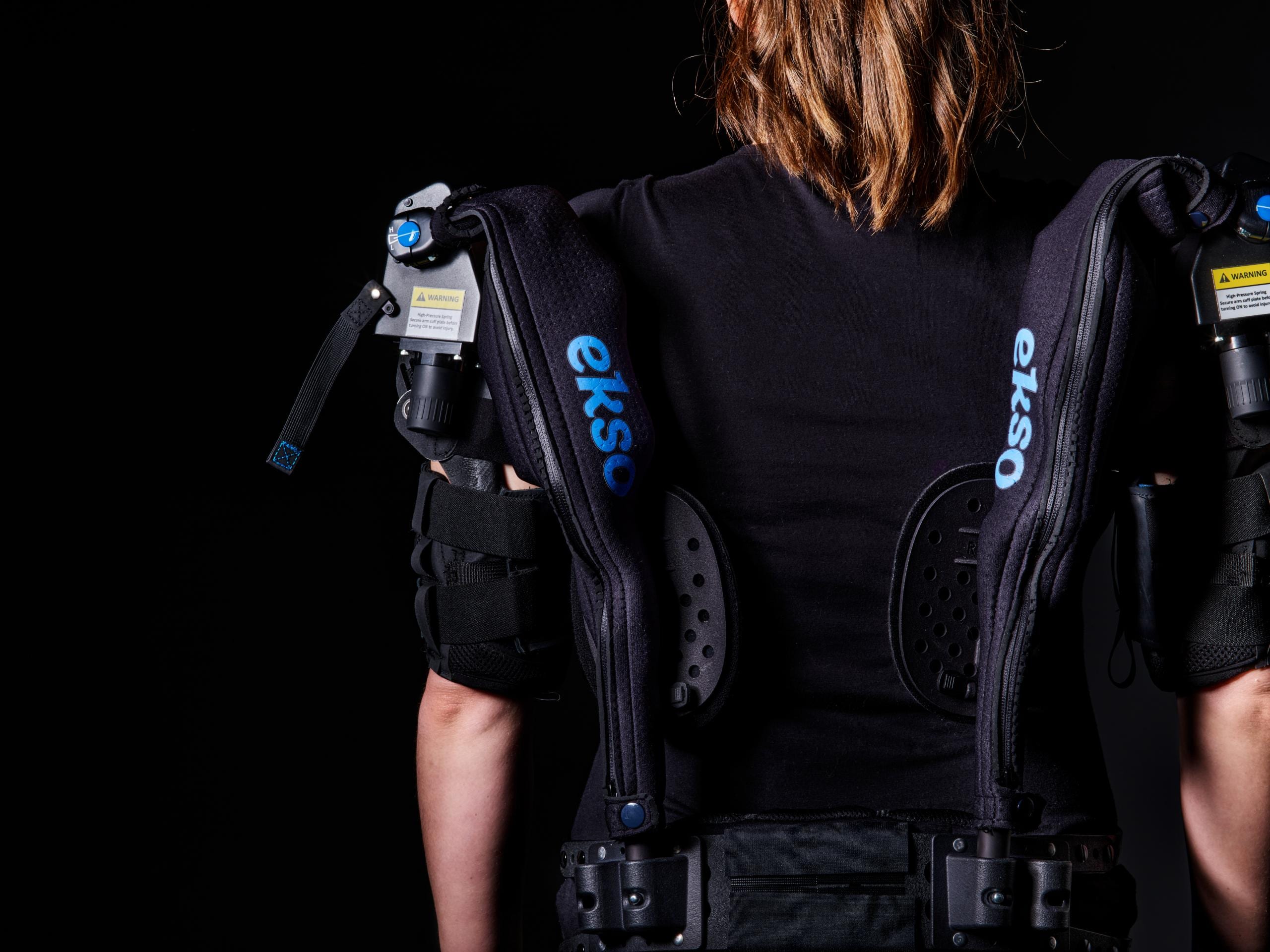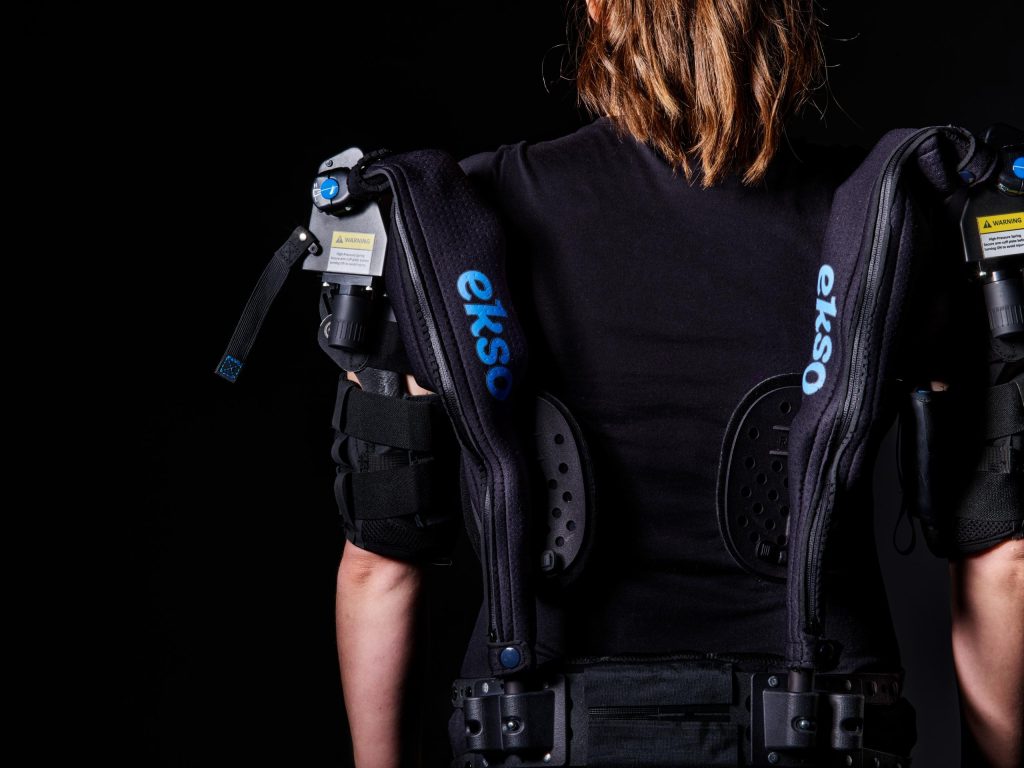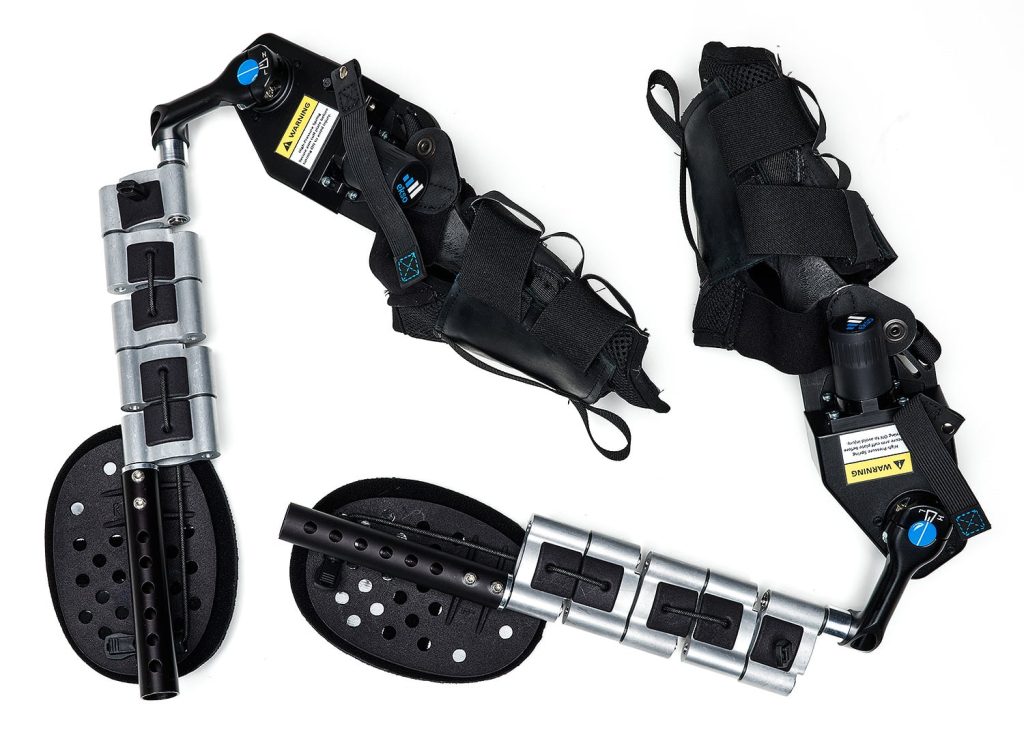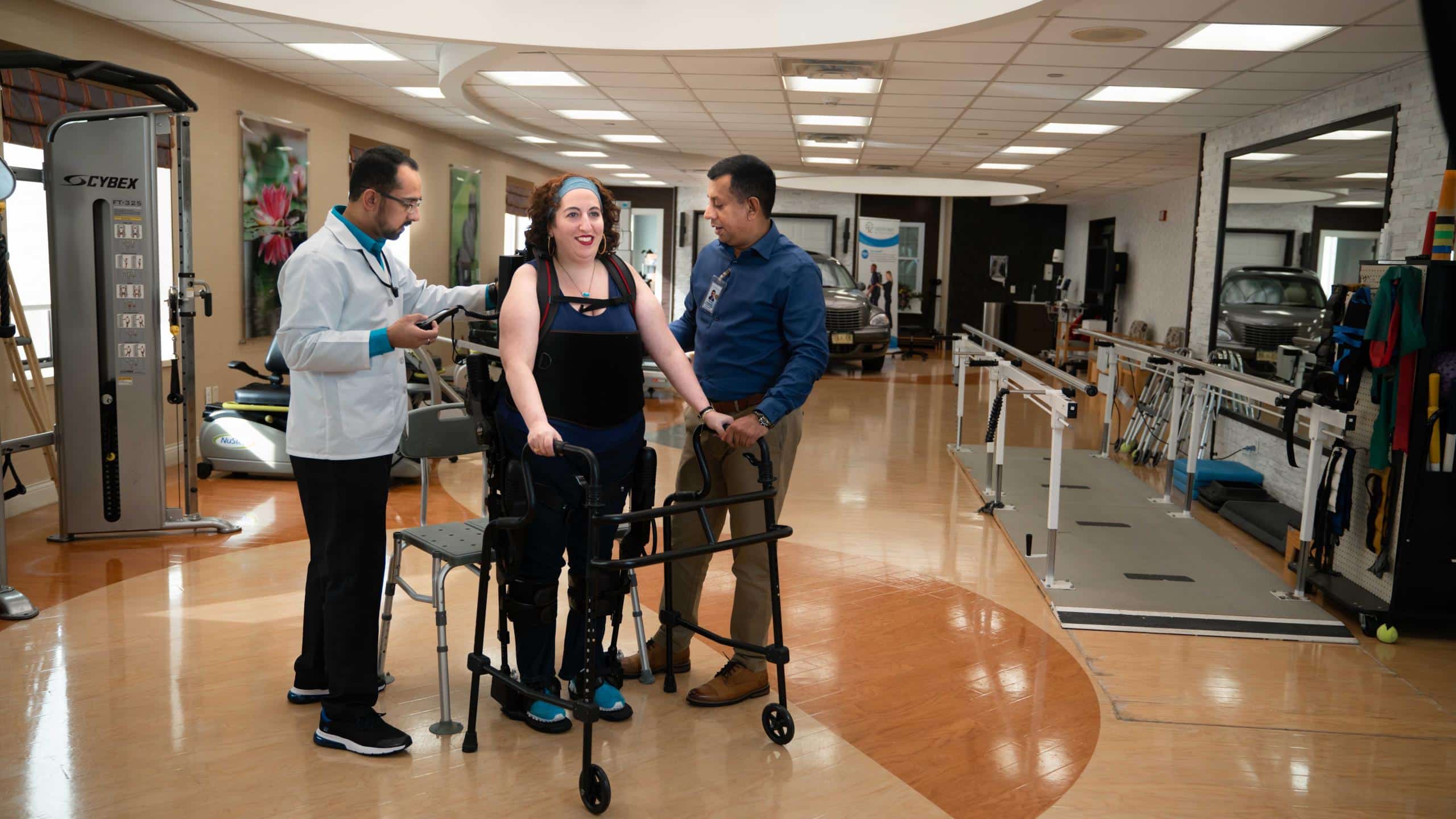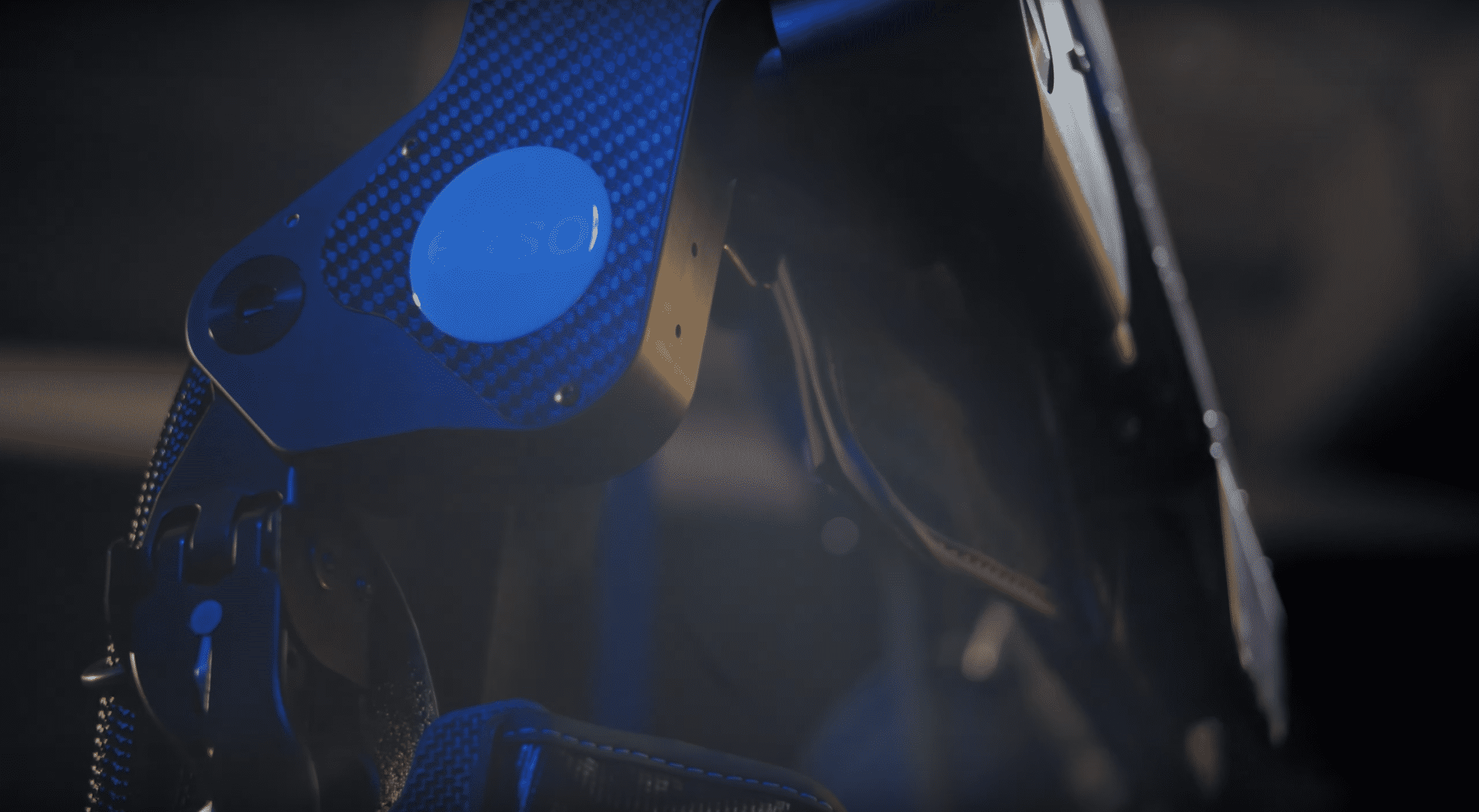Ekso Bionics is the world leader in providing exoskeleton technology that improves quality of life and enhances human capabilities. Their first exosuit, HULC, was used in military applications and allowed soldiers to carry heavy loads across long distances and at greater speeds. Since then, they’ve continued to build on their robotic suit offerings, and they’re still used by DARPA to this day.
Ekso has also branched into neurorehabilitation and physical therapy. With their EksoNR program, stroke patients, those with acquired brain injuries, and even patients suffering paraplegia from incomplete spinal cord injuries (SCI) can be trained to walk again and regain their natural gait. More and more often, however, Ekso Bionics is bringing its expertise to industrial applications, such as wearables and robot tools for construction workers, manufacturing, and the automotive industry. Here are just a few of their most successful products for industrial applications and how they’re leading to safer practices.
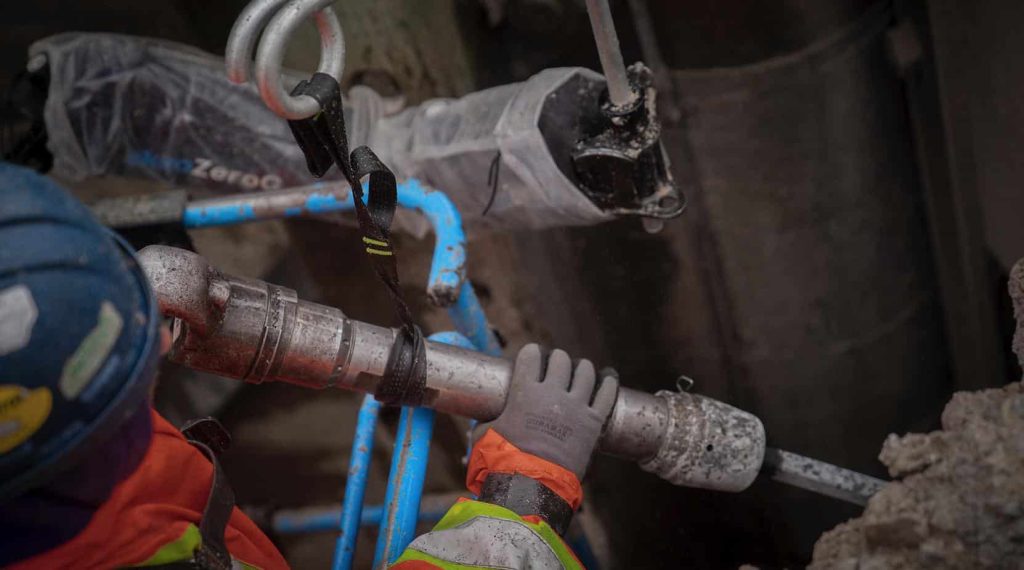
EksoVest
Constructions workers and other industry employees are at greater risk for workplace injuries compared to most of the population. In addition to the physical pain and mental stress caused to the injured worker, workplace injuries also cost productivity and can lower employee morale. Such injuries are most commonly caused by overexertion and worker fatigue. EksoWorks believes that all workplace injuries are preventable.
The EksoVest is the original upper body wearable technology that provides lift assistance and increased endurance for workers. The vest wraps around workers like a harness, connecting near the hips and once again at the upper arm. It supports worker’s arms through repetitive motions and heavy lifting. The vest is probably most well-known thanks to its test run with the Ford group. The Ford Motor Company used the EksoVest to help assembly line workers perform overhead tasks, such as installing oil filters in vehicles, for increased periods of time. It greatly reduced the physical toll of the vehicle assembly process, and feedback from these tests was used to improve the vest even further.
Ekso EVO
This is the modern evolution of the EksoVest. Boasting the tagline “power without the pain,” EVO is a durable and comfortable vest the assists workers with tasks at chest height and overhead work alike. EVO provides greater temperature control than the original model, and it can track the full range of movement, so even extreme movements are totally unrestricted.
In addition to the assembly improvements, EVO is still a spring-loaded suit that requires no batteries or power whatsoever, so workers can take it on a tough job anywhere without having to worry. EVO even allows workers to toggle how weight is balanced on each shoulder, so they’re in complete control and can adjust settings without any help.
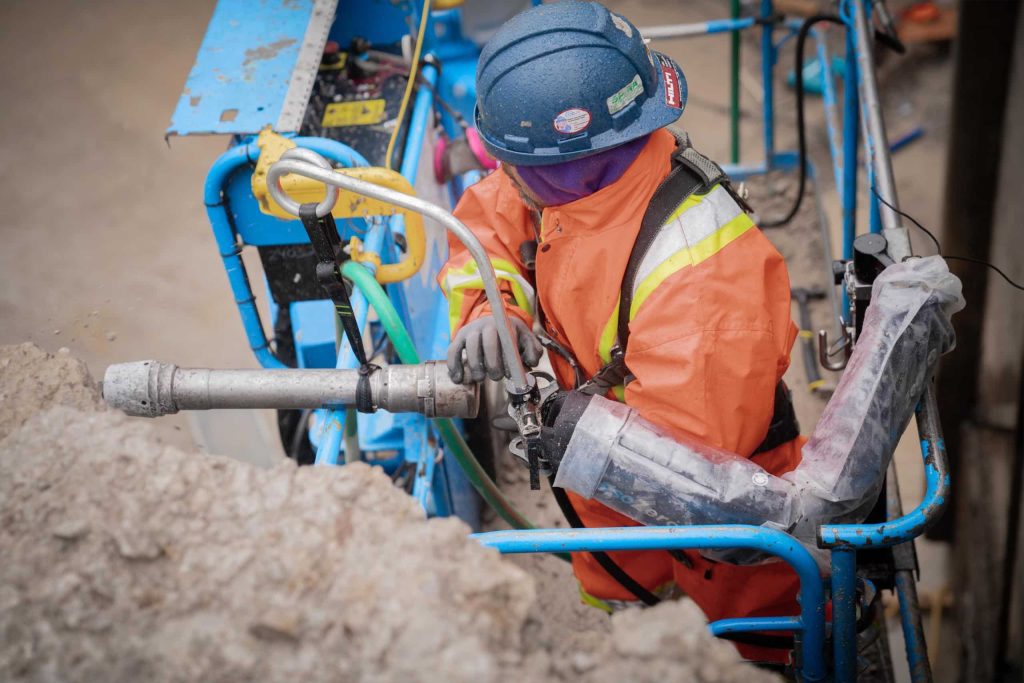
Ekso ZeroG
This solution is essentially a robot arm that workers can use to carry and hold heavy tools. It can be deployed anywhere, but it’s mainly used for aerial jobs, such as on construction scaffolding. The arm supports a wide variety of tools weighing up to 42 lbs including rotary hammers, rivet busters, grinders, drills, and more.
Like EVO, this is an entirely spring-loaded solution, so workers don’t have to worry about lugging around a power supply for deployment. The arms essentially transfer the weight from the tool into its base and then into the ground, so workers can experience a true sense of weightlessness when using the tools. This includes virtually zero-effort tool movement as well. At this time, it can be safely mounted to aerial work platforms and scaffolding, but as the technology advances, it will likely be mountable on other surfaces in the future.
Combining EVO and ZeroG will provide your workforce with everything they need to cut down on incident rates, improve performance, and boost morale.
Contact Ekso Bionics
Exoskeletons and robots may sound as though they belong in a sci-fi film, but they don’t. Exoskeletons belong right here, among the millions of people experiencing the effects of neurological and physical injuries leading to weakness and paralysis. To learn more about the newest exosuit technology and how they can help your application, reach out to the Ekso Bionics team today.




